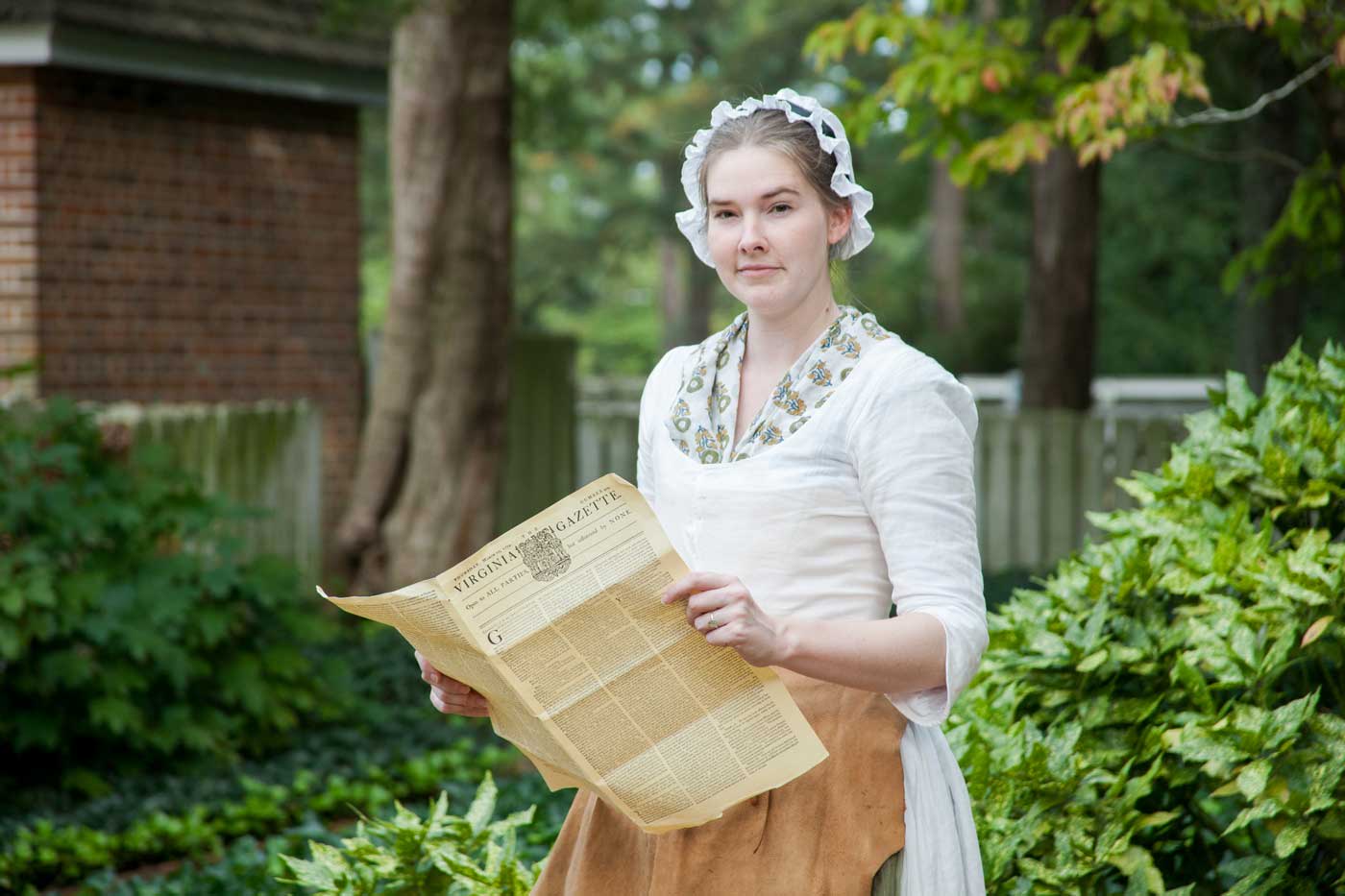5 Common Asked Questions, Answered
I’m Emma Cross, and I interpret a Nation Builder named Clementina Rind, who lived in Williamsburg from 1765-1774. Her husband ran one of the newspapers, and at his death she took over the business. Rind was the first female printer in Virginia and, as far as we know, the first women to be elected to a position in Virginia’s colonial government. She was elected in May of 1774 to the post of public printer.
I’d like to answer a few commonly asked questions I get when portraying Clementina Rind.
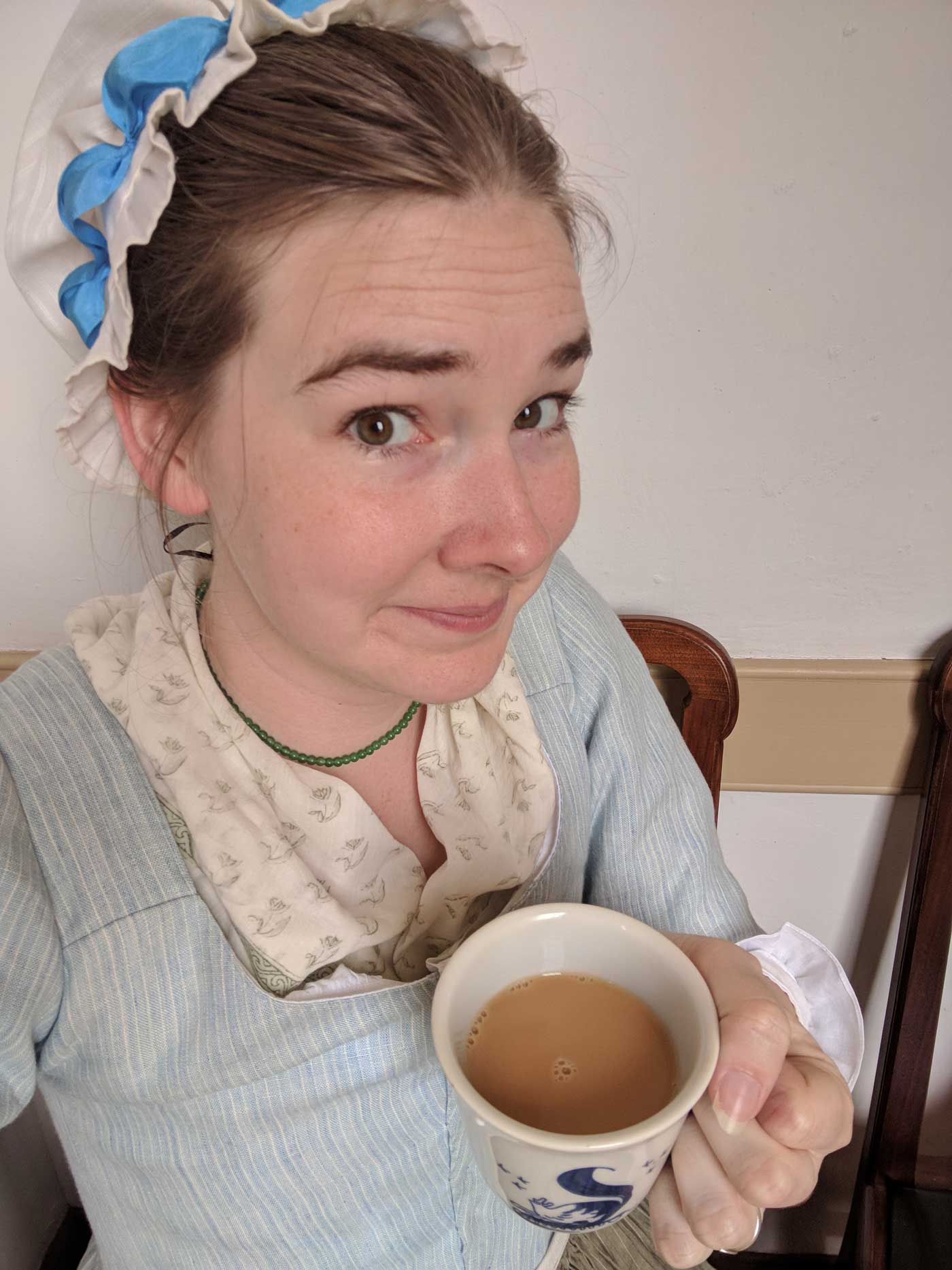
1. Wait? A Woman running a business?
Yep! Women certainly were running businesses! In fact, many of the trades and businesses in Williamsburg were run by women; single, married and widowed. Clementina Rind took over her husband’s printing when he died in August 1773. She probably was working alongside him in the business before his death considering how quickly and seamlessly she continues printing the newspaper. Women were an active part of the 18th-century workforce. A good way to think in a 18th-century mindset is that if you are not born to privilege, you are born to work. Countless hundreds of women, either in the colonies and in England, were running or working in a variety of trades. You can read the papers that Clementina printed on our Rockefeller Library’s digital resources page. Look for Virginia Gazette and then the name Rind.
2. Isn’t printing a man’s trade?
Printing in the 18th century tended to be a male dominated trade but you do find women working in the trade, from typesetters in large London warehouses to women working alongside of their husbands in the Colonies. For example, Anne Green of Annapolis took over her husband's paper The Maryland Gazette in 1767. She was also Maryland’s Public Printer for a time. Mrs. Rind would have known Mrs. Green quite well. Their husbands had been partners in the Maryland Gazette. Most trades do tend to either be male dominated or female dominated. But you find people working in every trade. Never say never! History tends to prove us wrong.
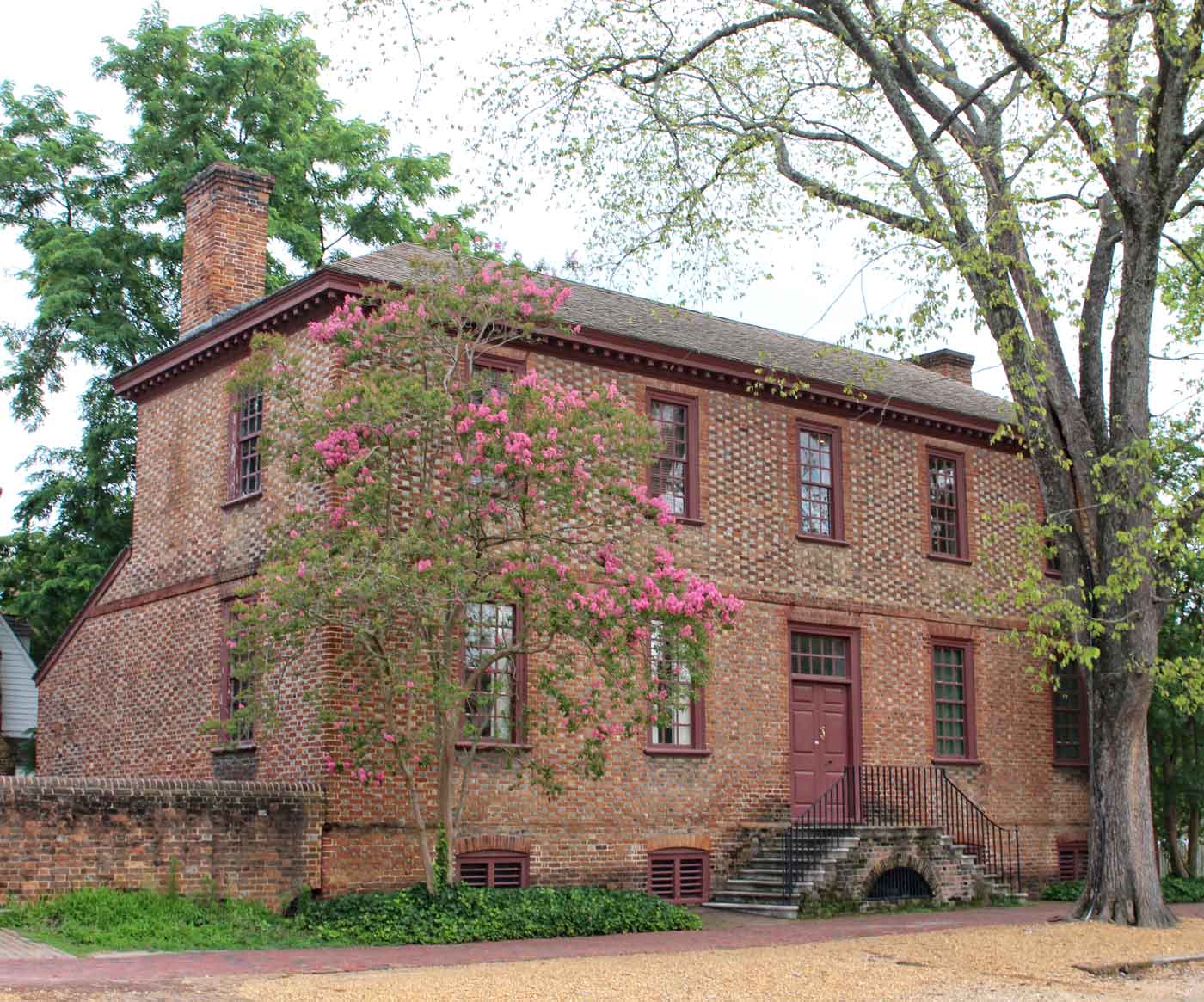
3. Where did she live?
During most of her time in Williamsburg, Clementina Rind lived in what we know today as the Ludwell-Paradise house (The very first house that Mr. Rockefeller purchased when he started the Foundation!). It has had a few 19th-century add-ons but the house from the street looks like it would have when Mrs. Rind lived there with her husband and four children in 1774. It must have been a busy house, because not only did they live there, that was also where they did their printing and accounting!
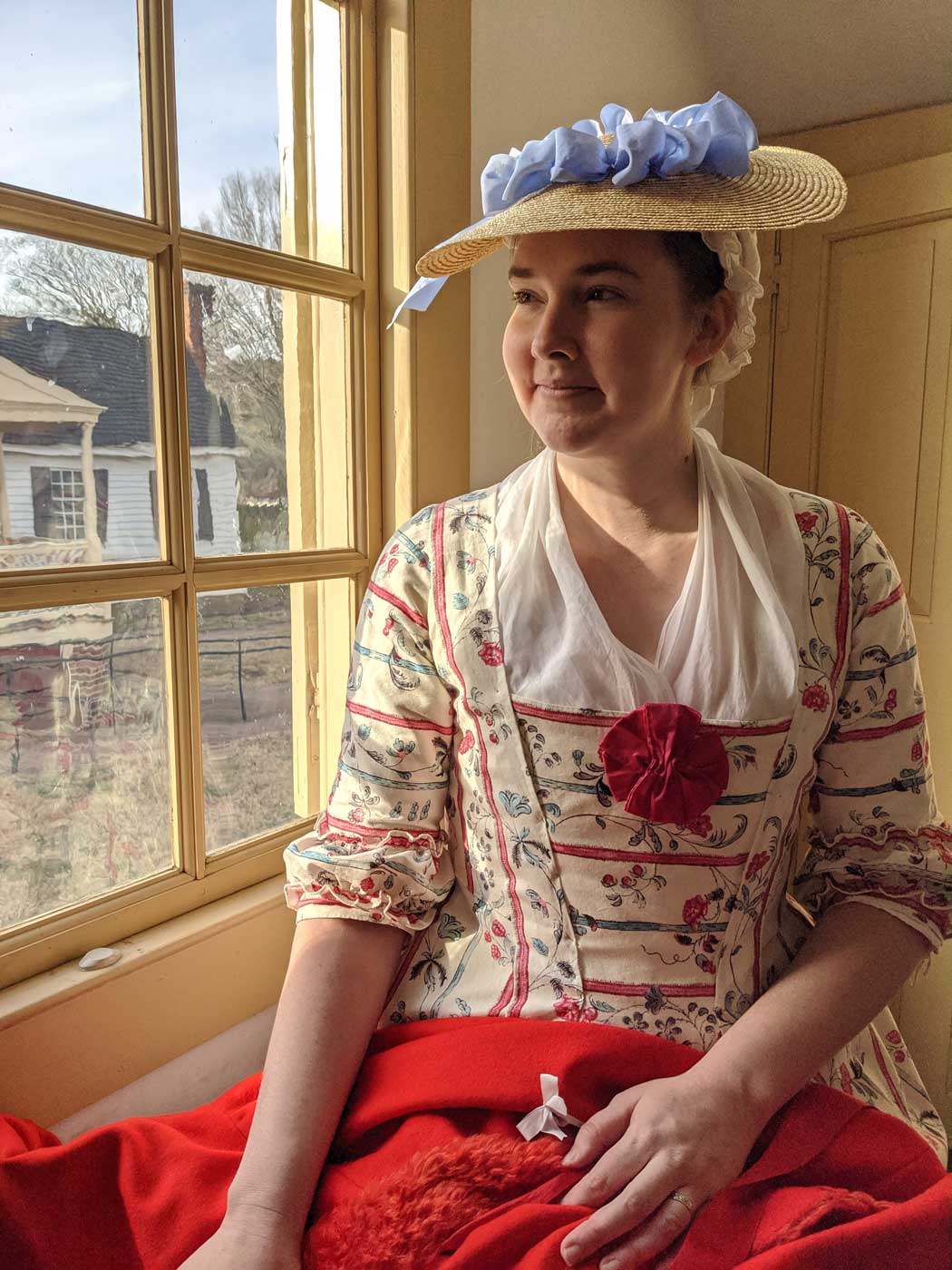
4. Who took care of her children while she was working?
This is a question I am still looking for firm answers to. We know that she gave birth to five children and that 4 lived to adulthood. We also know that the Rinds owned an enslaved man named Dick based on an inventory in 1773. It is possible that when he was not working at the press he was taking care of other household duties and watching over the children. Also, the oldest two boys were 11 and 10 so they may have been tasked with keeping any eye on their siblings. I bet that if things got too quiet, Mrs. Rind would have gone looking for her children to make sure there wasn’t trouble. Not much changes!
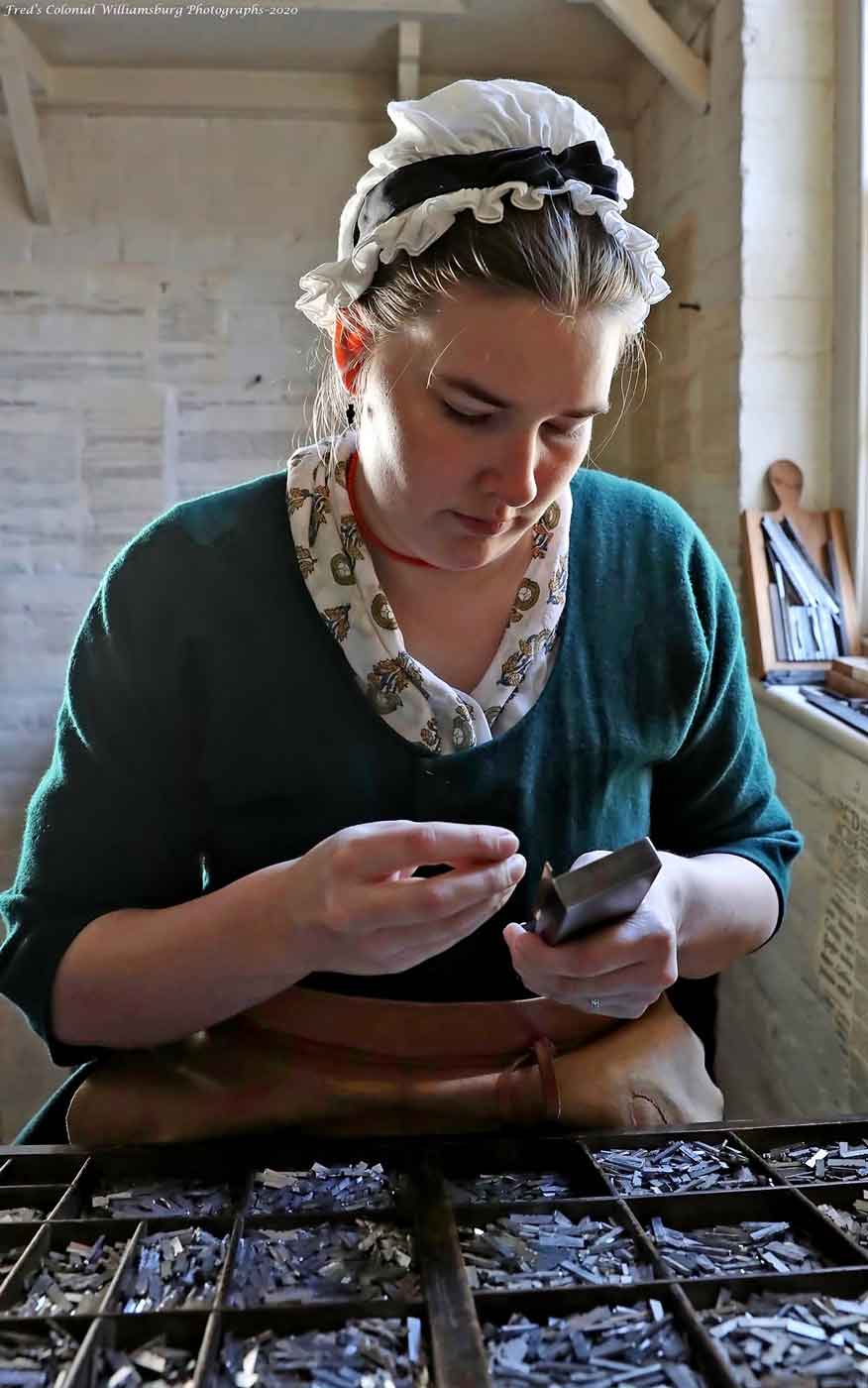
5. Did she print anything important?
She printed a ton! Some were important for her subscribers’ daily lives, such as local news, advertisements, or letters of opinions. The free and enslaved community would have read of property sales and runaway ads, and were impacted by what they meant. Two documents stick out in my mind, though. The first was one of the last things she printed for the House of Burgesses in May 1774. That was the short document that started a chain of events, The Call for Fasting and Prayer. It was the official response from the Burgesses to express solidarity with the people of Boston. The Port of Boston was closed as a response to the Boston Tea Party. I imagine as she printed it, she read between the lines and understood what it meant. What did she think of it? I wish I could ask her.
The second document is a pamphlet, probably the last thing she printed before her death in September 1774; A Summery View of the Rights of British America. The author was anonymous, and the pamphlet bearing only the words “printed by Clementina Rind.” I am sure many asked her who wrote it. As far as I know, she carried the knowledge to her death. We now know that it had a vast impact on Virginia, much like Payne’s Common Sense did later. Its author has finally been revealed to be Thomas Jefferson. But for some time, it only bore the name of Clementina Rind.
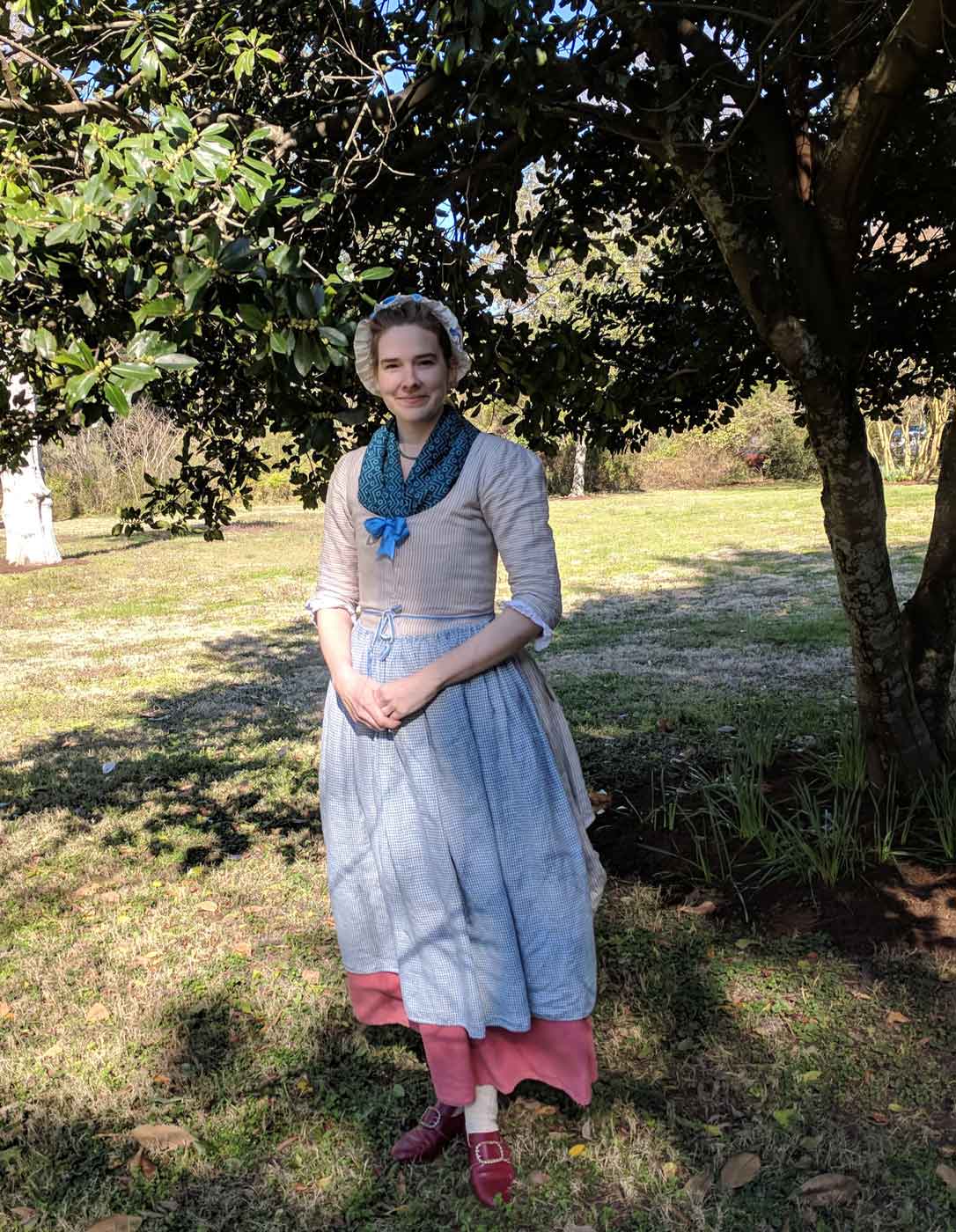
Emma Cross has been with the Colonial Williamsburg Foundation since 2002. Starting as a junior interpreter, she has worked across the historic area. Most of her years were spent working alongside and learning from the amazing tradespeople in many shops. You may have seen her in publications and evening programs throughout the Foundation. In 2017 she joined the Nation Builders to portray and research the life and times of Clementina Rind. In her spare time, Emma loves sewing, walking historic battlefields, and reading anything by J.R.R. Tolkien.
